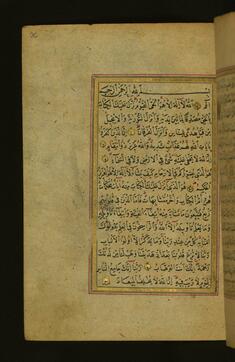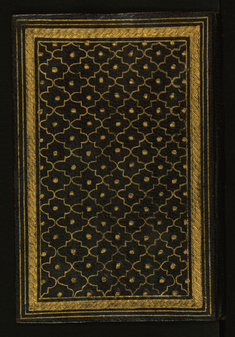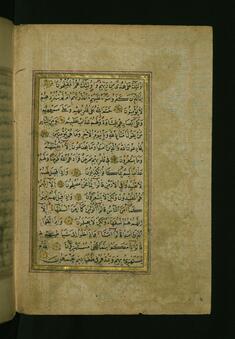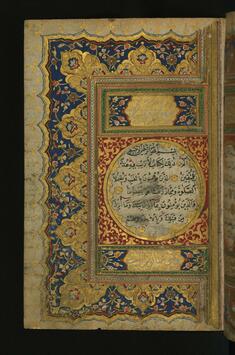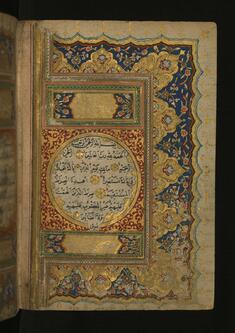Qur'an
(Manuscripts and Rare Books, Islamic World , Islamic Manuscripts)
Walters manuscript W.577 is a small, illuminated single-volume copy of the Qur'an was produced in Ottoman Turkey in 1282 AH/AD 1865-1866 by Muhammad ibn Mustafá Izmiri, a pupil of al-Rudusi. The colophon in Ijazah script indicates that the present codex is the 21st copy executed by him (fol. 304b). The manuscript opens with an illuminated double-page incipit with the verses of chapters 1 (Surat al-fatihah) and 2 (Surat al-baqarah) (fols. 1b-2a). The text is written in Naskh script in black ink with reading marks in red. Verses are separated by illuminated discs with colored dots and chapter headings are in Riqa' script in white ink. Polychrome medallions in the margins indicate textual divisions and prostration. The binding of black leather is decorated with a tooled and gold-painted geometric design enclosed by gold frames on the upper and lower boards.
Provenance
Provenance (from the French provenir, 'to come from/forth') is the chronology of the ownership, custody, or location of a historical object. Learn more about provenance at the Walters.
Henry Walters, Baltimore [date and mode of acquisition unknown]; Walters Art Museum, 1931, by bequest.
Exhibitions
| 2012 | Paradise Imagined: Images of the Garden in the Islamic and Christian World. The Walters Art Museum, Baltimore. |
Geographies
Turkey (Place of Origin)
Measurements
Folio H: 5 1/8 x W: 3 9/16 in. (13 x 9 cm)
Credit Line
Acquired by Henry Walters
Location in Museum
Not on view
Accession Number
In libraries, galleries, museums, and archives, an accession number is a unique identifier assigned to each object in the collection.
In libraries, galleries, museums, and archives, an accession number is a unique identifier assigned to each object in the collection.
W.577



